Language Services Associates (LSA), a leading provider of professional translation services, has recently teamed up with [tooltip content=”The New York City Housing Authority (NYCHA) is committed to increasing opportunities for low- and moderate-income New Yorkers by providing safe, affordable housing and facilitating access to social and community services.” url=”” ]New York City Housing Authority[/tooltip] (NYCHA), helping them to communicate with their constituents, partners and advocates in languages other than English. Our initial collaboration involved translating Plan NYCHA, the report on the current public housing preservation initiative underway in New York City, into Spanish and Russian. The LSA [tooltip content=”A member of the Translation and Localization division assigned to manage a client project from the estimating phase through to completion, delivery and follow up.” url=”” ]Project Manager[/tooltip] on this account, Molly MacPherson, recently sat down with us to answer a few questions about working on this project.
What is Plan NYCHA?
Plan NYCHA: A Roadmap for Preservation is a five-year initiative to preserve the state of public housing in New York City, while increasing economic opportunities and improving the quality of life for NYCHA’s more than 600,000 residents. A description of this initiative is summarized by NYCHA Chairmen John B. Rhea below and described in full detail at: http://www.nyc.gov/html/nycha/html/about/plannycha.shtml.
The report is a 56-page glossy publication identifying the key goals of the initiative, detailing data to show the current state of public housing and its needs, citing the individual experience of residents and community leaders and serving as a call to action for improvements to be made in a wide variety of areas.
What is the organization’s purpose in translating this publication?
NYCHA created this report to communicate with and bring together residents, policymakers, advocates, NYCHA staff and New Yorkers at large, and to call upon all of them to join the fight to preserve New York City public housing. Some of these public housing stakeholders have a different first language than English, and so the purpose of translating Plan NYCHA was to communicate with them in their own [tooltip content=”The syntactical, grammatical or structural form peculiar to a language.” url=”” ] idiom[/tooltip], in the hopes of more successfully rallying their support and giving them key insight into the intended achievements of the initiative.
Can you take us, step by step, through the process of translating Plan NYCHA?
The first phase of this project was the [tooltip content=”A document that an organization posts to elicit bids from potential vendors for a product or service.” url=”” ]Request for Proposal[/tooltip] (RFP), where LSA responded to many detailed questions about our competence in this arena and completed a sample translation for their consideration. Having convinced NYCHA of our strong capabilities in their unique subject area, we then selected the team (see below), explaining the purpose of the publication to them and the audience it should address.
Next, we gathered linguistic resources from NYCHA. They had translated several different publications in the past, and have a team of in-house linguists who could share glossaries and other support materials with us, to help us continue to communicate in the same voice, using the same expressions, as in past materials translated to these languages.
Once we began production, we started with the Executive Summary, an eight-page document giving an overview of the goals of Plan NYCHA. The contents of the Executive Summary also appear within the body of the full report, so it gave us an opportunity to deliver a small sample to NYCHA’s linguistic team for their input. We had a series of conversations with them at that point about key terminology and expressions that helped guide our translation of the remainder of the report.
Which translation method was used to complete this project (PT or TEP)?
This publication went through the [tooltip content=”This is a three-step process. After translating, the document is sent to a second Linguist who serves as an Editor. The Editor may make changes and corrections to the initial translation and has the final say on these edits. The Editor then sends the document to the Project Manager, who provides a final proofread and quality assurance check.” url=”” ]TEP process [/tooltip]– Translation, Editing and Proofreading, as requested by the client in the RFP. In addition, because this is a glossy, attractively designed publication, we also provided multilingual formatting of the text, which was then proofread by the [tooltip content=”Qualified Linguist who reviews the translated file(s) and makes any modification he / she deems necessary. In LSA’s model, the Editor is an experienced Linguist who specializes in the subject matter at hand.” url=”” ]Editor[/tooltip] (and by me) after layout.
How did you select Translators to complete the work for NYCHA?
We looked for Translators who had a proven track record of excellence on LSA translation projects with documented competence in translation in their languages. But competence and excellence weren’t enough! We also sought Linguists who are familiar with the way their language is spoken in the New York City area, to ensure regional and dialectical appropriateness, as well as making sure they had familiarity with the subject matter.
What challenges did you face, if any, when working on this project? How did your team come up with solutions to meet these challenges?
Because NYCHA has a team of professional linguists in-house and had translated several publications already, LSA needed to find ways to make our translations align with what had been published in the past, and tailor our work to the satisfaction of NYCHA’s linguistic team. We did this by gathering resources ahead of time from them, such as glossaries, [tooltip content=”A set of standards for the writing and design of documents, either for general use or for a specific publication, organization or field.” url=”” ]style guides[/tooltip] and past translations, and by seeking their input on a small sampling (the Executive Summary) prior to undertaking the full report, in order to better adapt the final product to their needs and preferences.
What is the current status of this project?
Plan NYCHA is now available in print and online in multiple languages at: http://www.nyc.gov/html/nycha/html/news/publications.shtml. LSA is ready to partner with NYCHA on their future needs regarding this initiative and any other professional translation services they may require.











